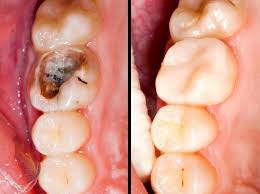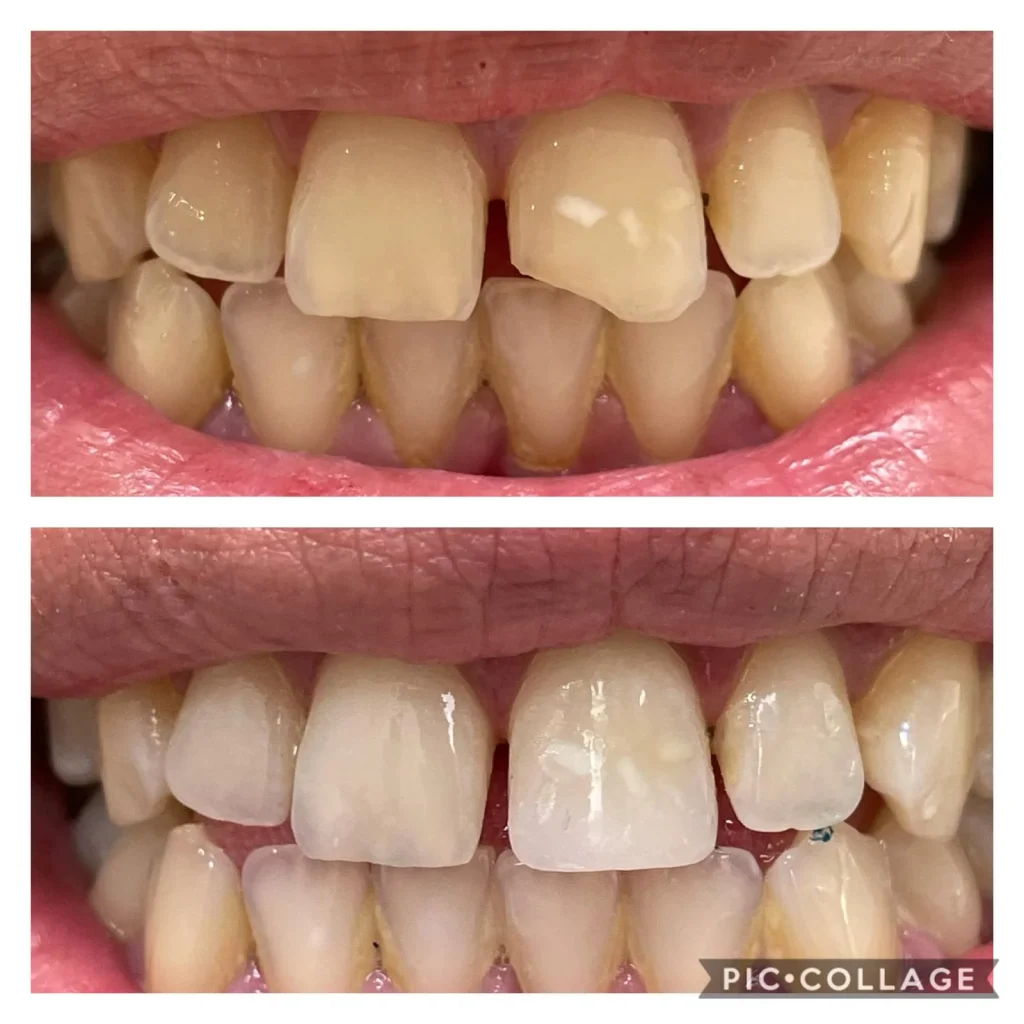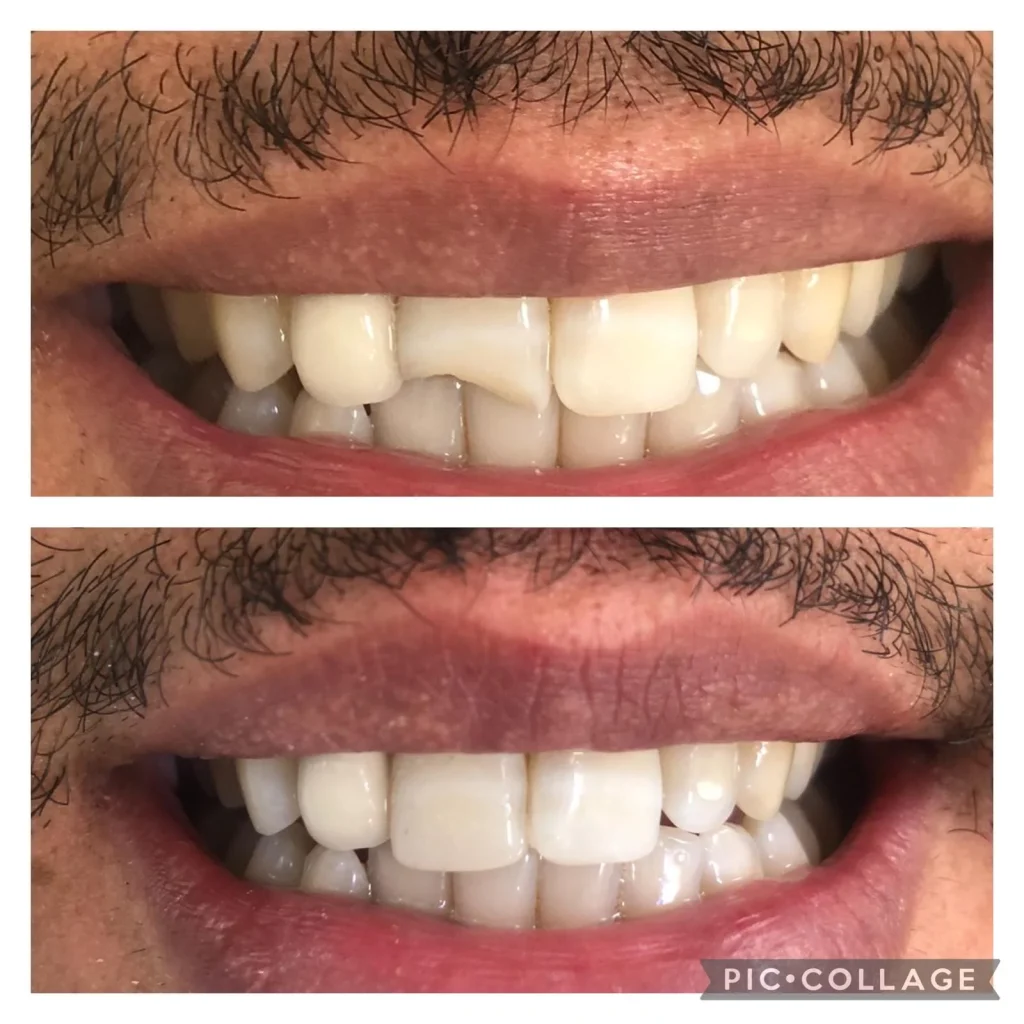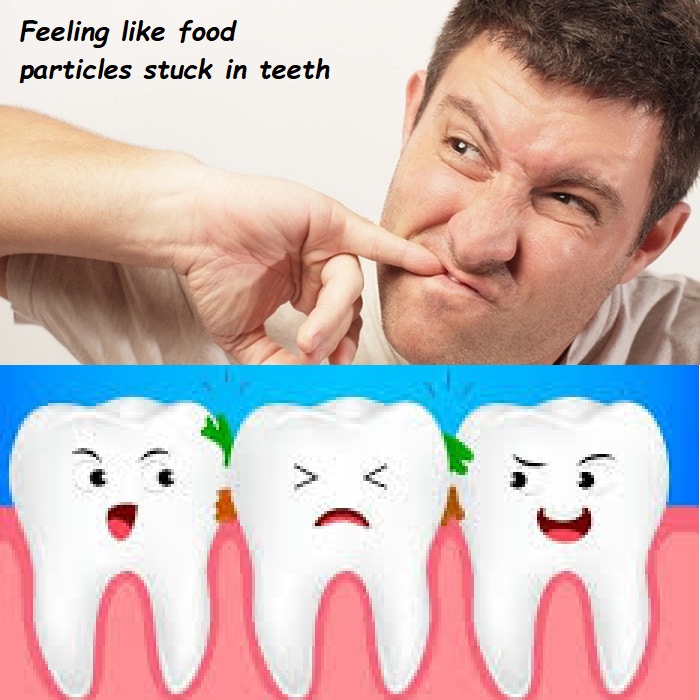what happens if you get a cavity under a bridge
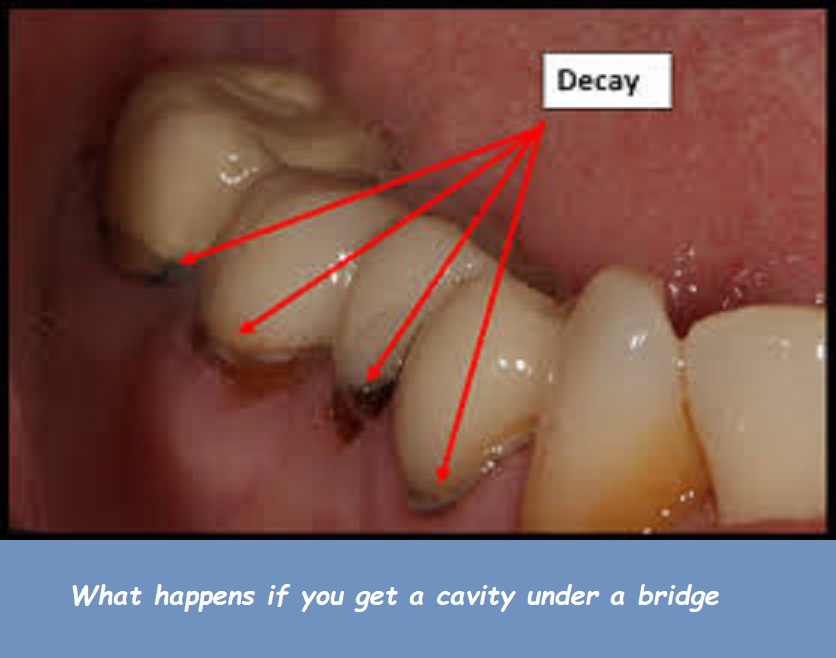
Dental bridges are a common solution for replacing missing teeth, restoring both functionality and aesthetics. However, like natural teeth, the teeth supporting a bridge (called abutment teeth) can develop cavities. In this comprehensive guide, we will explore what happens if you get a cavity under a bridge, the implications, treatment options, and preventive measures.
Understanding Dental Bridges
A dental bridge is a prosthetic device used to replace one or more missing teeth by anchoring to the adjacent natural teeth or implants. Bridges can be made from various materials, including porcelain, ceramic, and metal alloys. They restore the ability to chew and speak properly and maintain the shape of your face.
How Cavities Form
Cavities, also known as dental caries or tooth decay, are caused by the buildup of plaque, a sticky film of bacteria that forms on teeth. When you consume sugary or starchy foods, the bacteria in plaque produce acids that erode the tooth enamel. Over time, this can lead to the formation of cavities.
The Impact of Cavities Under a Bridge
Developing a cavity under a dental bridge can be problematic for several reasons. Here’s a closer look at the potential consequences:
Structural Integrity of the Bridge
A cavity on the abutment tooth can weaken its structure, compromising the stability and integrity of the entire bridge. If left untreated, the tooth may become too weak to support the bridge, leading to failure of the prosthetic.
Risk of Infection
Cavities that progress without treatment can lead to tooth infections, which can cause pain, swelling, and further damage to the tooth and surrounding tissues. In severe cases, the infection can spread, leading to more serious health issues.
Compromised Oral Function
A cavity under a bridge can affect your ability to chew and speak properly. The discomfort and pain associated with a cavity can make it difficult to perform everyday functions, impacting your quality of life.
Increased Treatment Complexity
Treating a cavity under a bridge is more complex than treating a cavity in a natural tooth. It may involve removing the bridge, treating the cavity, and then either reattaching the bridge or fabricating a new one. This can be time-consuming and costly.
Symptoms of a Cavity Under a Bridge
Detecting a cavity under a bridge can be challenging, as the bridge may obscure the visual signs of decay. However, there are some symptoms to watch for:
Tooth Sensitivity
Increased sensitivity to hot, cold, or sweet foods and beverages can indicate the presence of a cavity. If you experience sudden or worsening sensitivity around the bridge area, it’s important to consult your dentist.
Persistent Pain
Persistent toothache or pain around the bridge area can be a sign of a cavity or infection. This pain may be continuous or triggered by chewing or biting.
Swelling or Redness
Swelling, redness, or tenderness in the gums around the bridge can indicate an underlying cavity or infection. Inflammation is the body’s response to bacterial invasion and should be addressed promptly.
Bad Breath or Unpleasant Taste
A cavity can harbor bacteria that produce foul-smelling compounds, leading to bad breath or an unpleasant taste in your mouth. If you notice these symptoms, it’s important to seek dental care.
Diagnosis and Treatment of Cavities Under a Bridge
If you suspect you have a cavity under a bridge, it’s crucial to visit your dentist for an accurate diagnosis and appropriate treatment. Here’s what to expect:
Dental Examination and Imaging
Your dentist will perform a thorough examination of your mouth, including the bridge and surrounding teeth. X-rays or other imaging techniques may be used to detect cavities that are not visible to the naked eye.
Treatment Options
The treatment for a cavity under a bridge depends on the severity of the decay and the condition of the abutment tooth:
Filling the Cavity
If the cavity is detected early and the decay is minimal, your dentist may be able to treat it without removing the bridge. This involves drilling out the decay and filling the cavity with a dental material such as composite resin.
Root Canal Treatment
For more advanced decay that has reached the tooth pulp, a root canal may be necessary. This involves removing the infected pulp, cleaning the tooth’s interior, and sealing it. In some cases, the bridge may need to be removed and replaced after the root canal treatment.
Bridge Removal and Replacement
If the abutment tooth is severely decayed or damaged, the bridge may need to be removed to properly treat the cavity. After treating the decay, a new bridge may be fabricated and fitted. This is a more complex and costly procedure but ensures the long-term health of your teeth and bridge.
Preventive Measures for Avoiding Cavities Under a Bridge
Preventing cavities under a bridge is essential for maintaining oral health and the longevity of your dental bridge. Here are some effective preventive measures:
Maintain Good Oral Hygiene
Proper oral hygiene is crucial for preventing cavities. Brush your teeth at least twice a day with fluoride toothpaste and floss daily to remove plaque and food particles from between your teeth and around the bridge.
Use an Antibacterial Mouthwash
An antibacterial mouthwash can help reduce the bacterial load in your mouth, lowering the risk of plaque formation and cavities. Rinse with mouthwash daily as part of your oral hygiene routine.
Regular Dental Check-Ups
Regular dental check-ups and cleanings are essential for monitoring the health of your teeth and bridge. Your dentist can detect early signs of decay and take preventive measures to protect your oral health.
Avoid Sugary and Starchy Foods
Limit your intake of sugary and starchy foods and beverages, as they contribute to plaque formation and cavities. Opt for a balanced diet rich in fruits, vegetables, lean proteins, and whole grains.
Use a Water Flosser
A water flosser can be particularly effective for cleaning around dental bridges. It uses a stream of water to remove plaque and debris from hard-to-reach areas, helping maintain the health of your abutment teeth.
FAQs About Cavities Under a Bridge
Can a Cavity Under a Bridge Be Treated Without Removing the Bridge?
In some cases, a cavity under a bridge can be treated without removing the bridge, especially if the decay is minimal. Your dentist can drill out the decay and fill the cavity with a dental material. However, more severe decay may require bridge removal for proper treatment.
How Can I Tell If I Have a Cavity Under My Bridge?
Symptoms such as tooth sensitivity, persistent pain, swelling or redness in the gums, and bad breath or an unpleasant taste can indicate a cavity under a bridge. Regular dental check-ups and imaging can help detect cavities early.
How Often Should I Visit the Dentist If I Have a Bridge?
It’s recommended to visit the dentist every six months for regular check-ups and cleanings. If you have a dental bridge, your dentist may recommend more frequent visits to monitor the health of your abutment teeth and the bridge.
Can I Prevent Cavities Under a Bridge?
Yes, you can prevent cavities under a bridge by maintaining good oral hygiene, using antibacterial mouthwash, having regular dental check-ups, avoiding sugary and starchy foods, and using a water flosser to clean around the bridge.
What Happens If a Cavity Under a Bridge Is Left Untreated?
If left untreated, a cavity under a bridge can lead to severe decay, tooth infection, and loss of the abutment tooth. This can compromise the stability and functionality of the bridge, requiring more complex and costly treatments.
Conclusion
A cavity under a bridge can pose significant challenges, affecting the structural integrity of the bridge, increasing the risk of infection, and compromising oral function. Recognizing the symptoms, seeking timely treatment, and adopting preventive measures are essential for maintaining oral health and the longevity of your dental bridge. Regular dental check-ups, proper oral hygiene, and a healthy diet play crucial roles in preventing cavities and ensuring the success of your dental bridge. By staying informed and proactive, you can protect your smile and enjoy the benefits of a well-maintained dental bridge for years to come.
Advanced Techniques for Detecting Cavities Under a Bridge
Early detection of cavities under a bridge is crucial for effective treatment and preventing further complications. Here are some advanced techniques used by dentists to diagnose cavities under a bridge:
Digital X-Rays
Digital X-rays are a standard diagnostic tool that provides detailed images of the teeth and surrounding structures. They can reveal cavities that are not visible during a visual examination, allowing for early intervention.
Cone Beam Computed Tomography (CBCT)
CBCT is an advanced imaging technique that produces 3D images of the teeth, bones, and soft tissues. It provides a comprehensive view of the dental structures, making it easier to detect cavities under a bridge and plan appropriate treatment.
Laser Cavity Detection
Laser cavity detection uses a diode laser to scan the teeth for signs of decay. The laser detects changes in the tooth structure caused by cavities, providing a non-invasive and accurate method for early diagnosis.
Intraoral Cameras
Intraoral cameras are small, handheld devices that capture high-resolution images of the teeth and gums. They allow dentists to examine hard-to-reach areas and identify cavities under a bridge with greater precision.
The Role of Fluoride in Preventing Cavities Under a Bridge
Fluoride is a mineral that plays a vital role in preventing cavities and maintaining oral health. It helps strengthen tooth enamel, making it more resistant to acid attacks from plaque bacteria. Here’s how fluoride can help prevent cavities under a bridge:
Fluoride Toothpaste
Using fluoride toothpaste daily can help strengthen the enamel of your abutment teeth, reducing the risk of cavities. Brush at least twice a day, ensuring that you reach all areas around the bridge.
Fluoride Mouthwash
Rinsing with a fluoride mouthwash can provide additional protection against cavities. It helps remineralize enamel and reduces the bacterial load in your mouth, lowering the risk of decay.
Professional Fluoride Treatments
Your dentist may recommend professional fluoride treatments, especially if you are at high risk for cavities. These treatments involve applying a concentrated fluoride gel or varnish to the teeth, providing long-lasting protection.
Addressing Common Myths About Dental Bridges and Cavities
There are several myths and misconceptions about dental bridges and cavities. Let’s address some of the most common ones:
Myth: Dental Bridges Do Not Require Special Care
Fact: Dental bridges require proper care and maintenance to ensure their longevity and the health of your abutment teeth. Regular cleaning, dental check-ups, and using additional cleaning tools like water flossers are essential.
Myth: Cavities Under a Bridge Cannot Be Detected
Fact: While it may be challenging to detect cavities under a bridge visually, advanced diagnostic tools such as digital X-rays, CBCT, and laser cavity detection can identify cavities accurately.
Myth: Only Sugary Foods Cause Cavities
Fact: While sugary foods contribute to cavity formation, starchy foods, and poor oral hygiene practices can also lead to cavities. Maintaining a balanced diet and good oral hygiene are key to preventing decay.
Myth: Denture Adhesive Can Fix a Loose Bridge
Fact: Denture adhesive is not a solution for a loose bridge. If your bridge feels loose or unstable, it’s essential to visit your dentist for a proper adjustment or repair.
The Connection Between Diet and Oral Health
Your diet plays a significant role in maintaining oral health and preventing cavities, including those under a bridge. Here are some dietary tips to support your oral health:
Limit Sugary and Starchy Foods
Sugary and starchy foods can contribute to plaque formation and cavities. Limit your intake of candies, cookies, chips, and sugary beverages to reduce the risk of decay.
Eat a Balanced Diet
A balanced diet rich in fruits, vegetables, lean proteins, and whole grains provides essential nutrients for oral health. Foods high in calcium, such as dairy products, help strengthen teeth and bones.
Stay Hydrated
Drinking plenty of water helps wash away food particles and bacteria, reducing the risk of plaque buildup. Water also helps maintain saliva production, which is essential for neutralizing acids and protecting teeth.
Avoid Frequent Snacking
Frequent snacking can increase the risk of cavities, as it provides a constant source of fuel for plaque bacteria. Stick to regular meal times and limit snacks to reduce the risk of decay.
The Importance of Regular Dental Check-Ups
Regular dental check-ups are crucial for preventing and managing cavities under a bridge. Here’s why you should schedule regular visits with your dentist:
Early Detection
Regular check-ups allow your dentist to detect cavities and other dental issues early, before they become more severe. Early detection leads to more effective and less invasive treatments.
Professional Cleaning
Professional dental cleanings remove plaque and tartar buildup that regular brushing and flossing may miss. This helps prevent cavities and maintain the health of your abutment teeth and bridge.
Monitoring Oral Health
Your dentist can monitor the condition of your dental bridge and abutment teeth, making necessary adjustments and recommendations to ensure their longevity and functionality.
Personalized Advice
During check-ups, your dentist can provide personalized advice on oral hygiene practices, diet, and preventive measures tailored to your specific needs and risk factors.
Conclusion
Getting a cavity under a dental bridge can be a challenging situation, but with timely detection, appropriate treatment, and preventive measures, you can maintain your oral health and the longevity of your bridge. Regular dental check-ups, proper oral hygiene, and a balanced diet are essential components of preventing cavities and ensuring the success of your dental bridge. Stay informed, proactive, and consult with your dentist regularly to protect your smile and enjoy a healthy, functional dental bridge for years to come.




